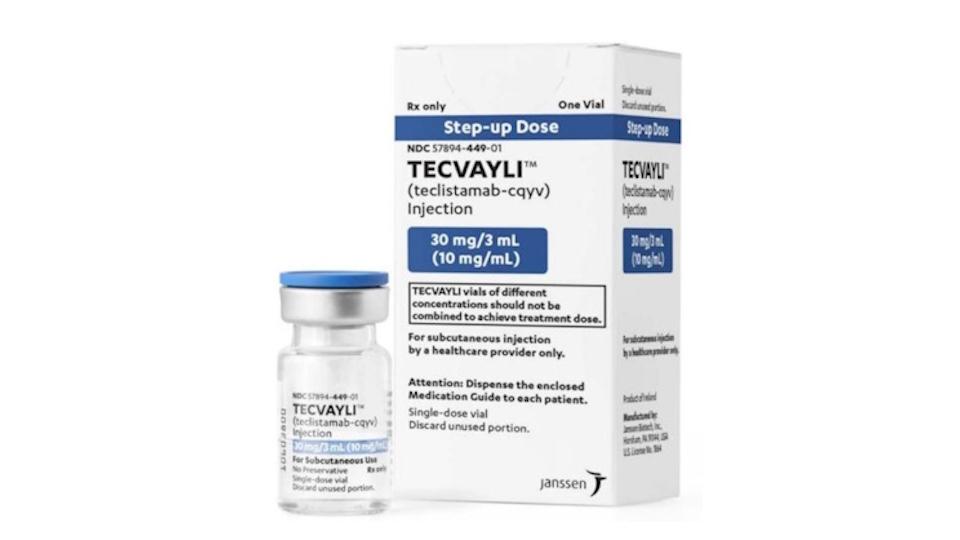Sanofi's Sarclisa gets one up on rival Darzalex in myeloma

Sanofi's Sarclisa has been an also-ran in the anti-CD38 antibody class behind Johnson & Johnson and Genmab's blockbuster Darzalex, but now has a chance to steal some of the spotlight.
The FDA has approved Sarclisa (isatuximab) as a first-line therapy for blood cancer multiple myeloma as a combination regimen alongside bortezomib, lenalidomide, and dexamethasone (VRd), for people who are not eligible for an autologous stem cell transplant (ASCT).
That extends the use of the drug in relapsed or refractory disease – for which it has been FDA-approved since 2020 – and makes it the first anti-CD38 competition to Darzalex (daratumumab) in the frontline setting.
For several years, Darzalex has been an option for transplant-eligible, previously untreated patients in combination with bortezomib, thalidomide, and dexamethasone (VTd), and alongside either lenalidomide and dexamethasone (Rd) or bortezomib, melphalan, and prednisone for the transplant-ineligible group.
The new approval is a boost for Sanofi because the VRd regimen has become the preferred first-line treatment option for transplant-ineligible multiple myeloma patients in recent years, giving Sarclisa the potential to leapfrog its rival in this population.
The approval is based on the IMROZ phase 3 study demonstrating that adding Sarclisa to VRd led to a 40% reduction in the risk of disease progression or death compared to VRd alone, and comes after a priority review by the FDA.
Sarclisa made around $413 million in sales for Sanofi last year, a fraction of the $9.7 billion booked by J&J for Darzalex, so having a niche free of competition from its rival could translate to more growth for Sarclisa, with Stifel analysts recently suggesting the new indication has the potential to be worth at least $2 billion.
Earlier this month, Sarclisa was added to the National Comprehensive Cancer Network (NCCN) guidelines for non-transplant multiple myeloma candidates as a category 1 (preferred) option alongside VRd and Darzalex plus Rd.
It could still have a tough time displacing Darzalex, given that recently presented data from the MAIA trial of J&J and Genmab's drug plus the Rd regimen showed a 33% improvement in overall survival (OS) after 7.5 years of follow-up, at 90 months compared to 64 months with Rd alone.
Meanwhile, J&J has developed a new subcutaneous version of its antibody called Darzalex Faspro, which does away with the need for intravenous infusions. And in the PERSEUS trial, Darzalex Faspro plus VRd showed greater efficacy than VRd alone in previously untreated transplant-eligible multiple myeloma.
Sanofi is also running studies to extend Sarclisa's label into the transplant-eligible population and has a subcutaneous formulation in late-stage development with clinical results due next year, as well.
It has completed the IsKia study of Sarclisa added to the standard KRd regimen of Amgen's Kyprolis (carfilzomib), lenalidomide, and dexamethasone in previously untreated, transplant-eligible patients, and is also running the GMMG-HD7 trial as a combination with VRd in the same setting, which could set up regulatory filings in 2025.
"Since first launching in 2020, we have made significant progress towards our ambition of establishing Sarclisa as a best-in-class therapy," commented Brian Foard, Sanofi's head of specialty care.
"The FDA's decision marks another momentous milestone toward our goal and expands the reach of this potentially transformative therapy to a larger population."












